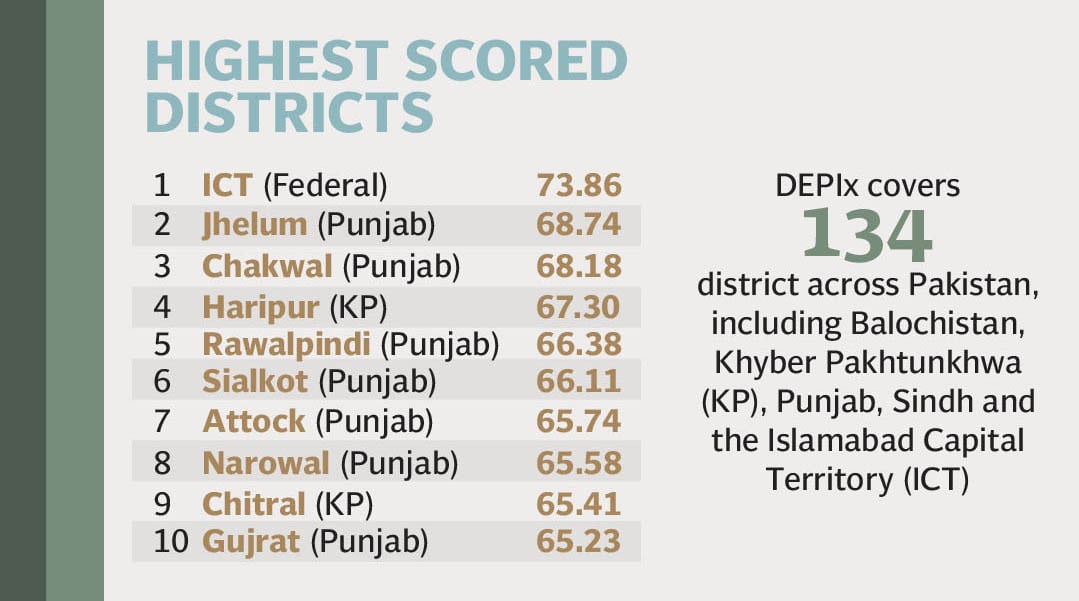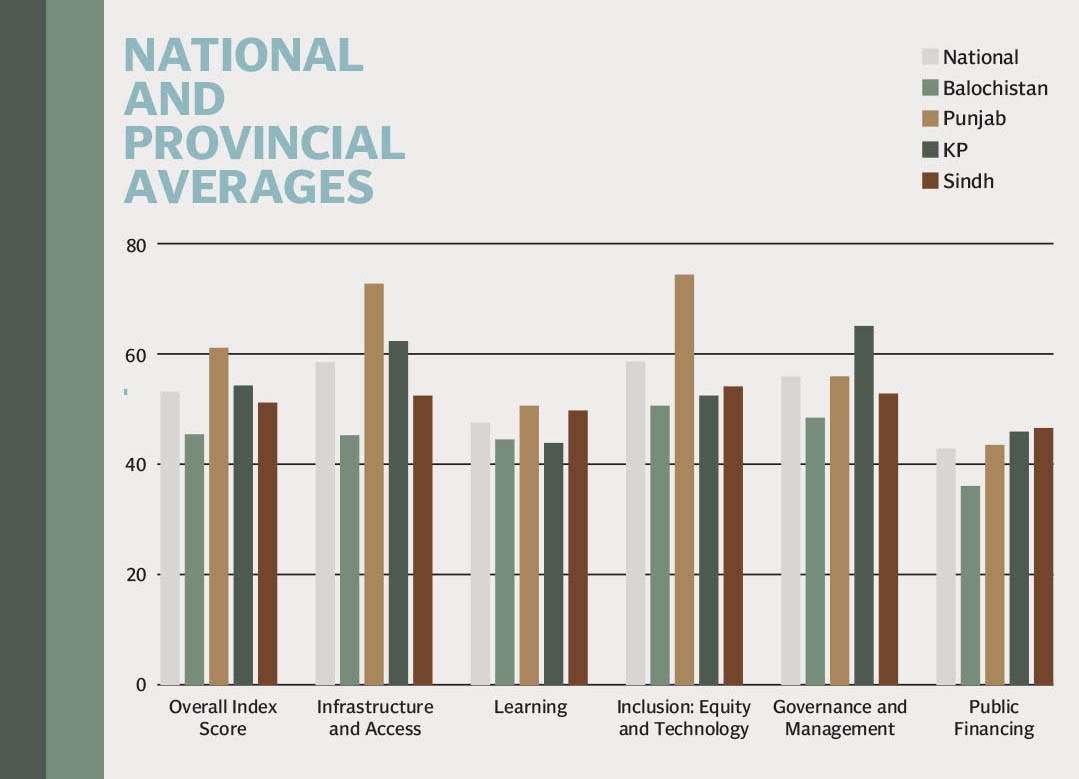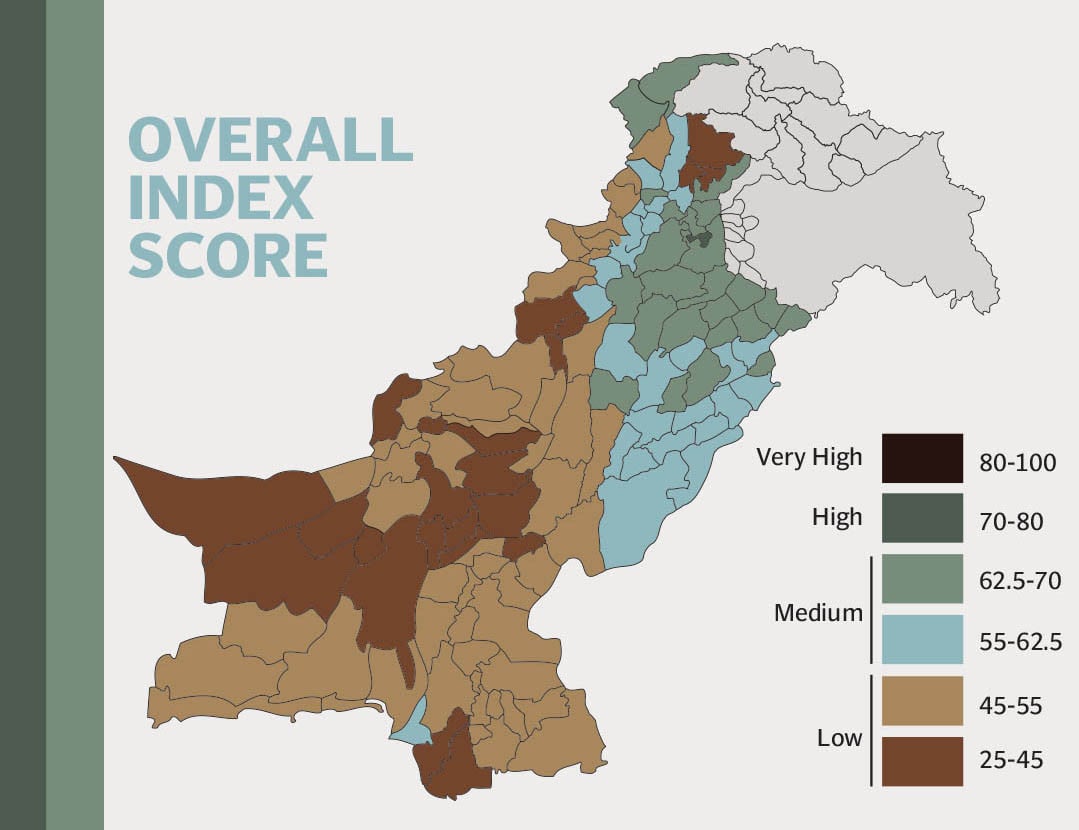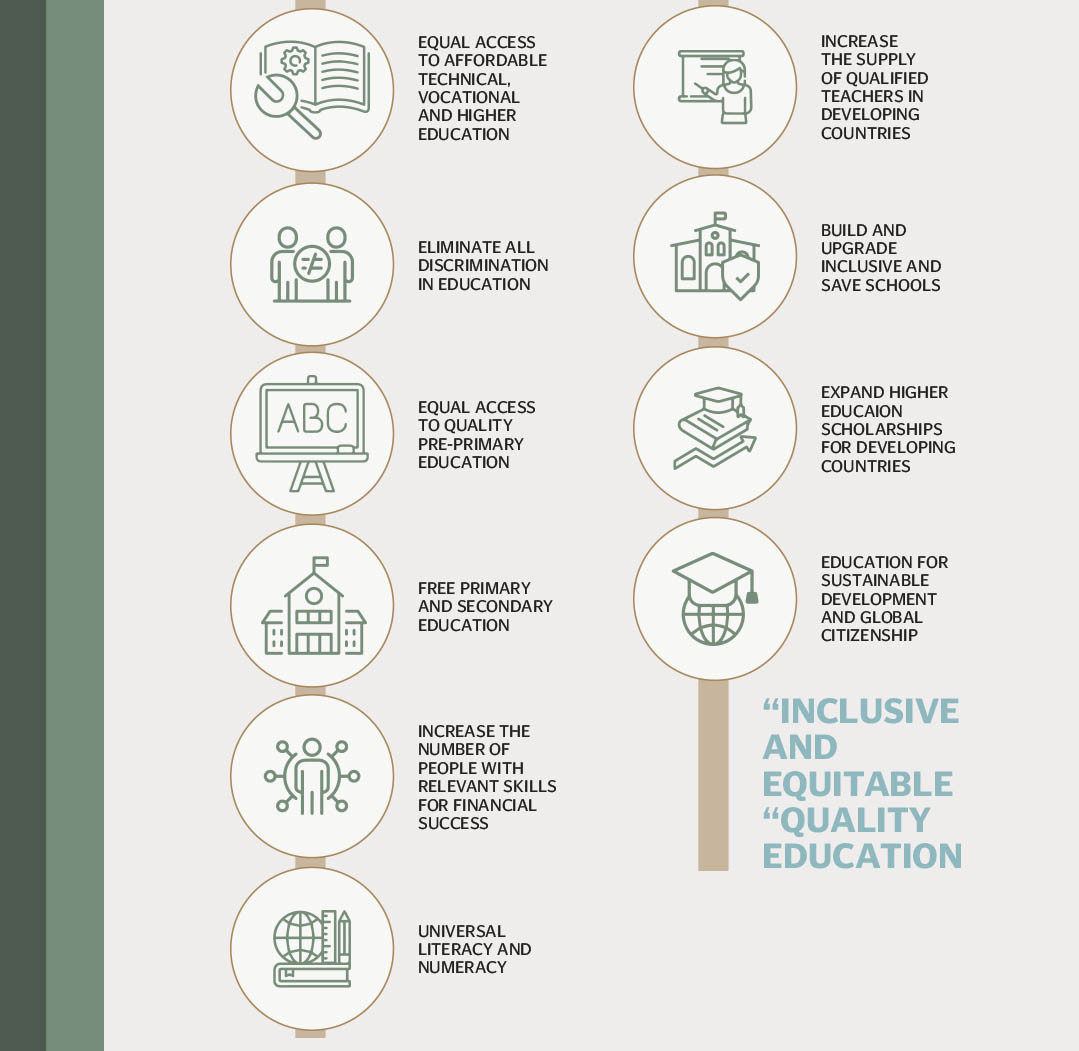The 2010 devolution of the educational authority and the establishment of the right to free education have yielded minimal gains while intensifying challenges.
Numerous surveys by non-profits and non-governmental organisations (NGOs), Unicef, Unesco, World Bank ASER, to name a few, reveal the persistent challenges that plague Pakistan’s education system. An overview of the Constitution (Eighteenth Amendment) Act, the most detailed version done by Alif Ailaan (2018-2023), and the latest by Pakistan Bureau Statistics Census Data 2023 are the critical ones. The key difference is this time, the Planning Commission has consolidated the numbers coming from various sources to give a holistic view in one place for all provinces, consolidating the national view at the government level. This sets a benchmark for setting targets for corrective measures but I still feel the sample size is too small. It covers 134 districts across Pakistan, including Balochistan, Khyber Pakhtunkhwa (KP), Punjab, Sindh, and the Islamabad Capital Territory (ICT).
In response to the ongoing education crisis, the Planning Commission has introduced composite scorecards following (another) education emergency declared by the Prime Minister in May 2024.
However, in my research I found that in the last 77 years, various governments in Pakistan have declared an education emergency multiple times to address the ongoing challenges in the education sector.
1947: Shortly after Pakistan’s creation, Quaid-e-Azam Muhammad Ali Jinnah emphasised the importance of education at the first national education conference.
2010: The introduction of Article 25A in the constitution, mandating free and compulsory education for children aged 5 to 16 years.
May 2024: Prime Minister Shehbaz Sharif declared an education emergency to enroll around 26 million out-of-school children.
September 2024: On International Literacy Day, Prime Minister Shehbaz Sharif reiterated the education emergency, emphasising collaboration with the private sector and civil society.

The question is how effective are these education emergencies? The outcome has been mixed, with some positive results but also many chronic ongoing challenges.
Education emergencies have raised awareness about the critical state of education in Pakistan, prompting both government and civil society to take action. We see some surveys come out every year and we hear the noise around each but what we lack is a corrective plan to address the issues.
Initiatives like the introduction of Article 25A in the constitution, which mandates free and compulsory education for children aged 5 to 16, have been significant steps forward, but was the state able to enforce it? The number of child beggars grows year by year, the increase in out of school children is alarming too. Clearly there is a huge gap in enforcing Article 25A.
Various campaigns have been launched to increase school enrolment, particularly for girls and children from marginalised communities, but as per DEPIx Report, 15 years after the enactment of Article 25-A, Pakistan continues to face significant challenges in achieving its educational goals. The country is home to one of the largest cohorts of out-of-school-children, with 25.61 million children not in school (Population and Housing Census, 2023). with pronounced gender disparities: 39% of girls aged 5-16 are out-of-school-children as compared to 32% of boys (Population and Housing Census, 2023).
The quality of education remains a concern, with many schools lacking trained teachers and adequate resources.
There is often a gap between policy formulation and implementation, leading to limited impact on the ground which is blatantly evident from this report.

Pakistan’s education system faces several significant challenges, spending only about 1.77% of its GDP on education, which is far below the recommended 4% by international agencies. “While funding remains a critical factor, the persistent failure to translate these resources into tangible improvements reveals deep-seated challenges that extend beyond mere financial constraints,” said Tehmina Qureshi, who teaches at the Institute of Business Administration. There is often a gap between policy formulation and implementation, leading to ineffective educational reforms. Many schools lack basic facilities such as clean drinking water, electricity, and proper classrooms. There is a shortage of qualified teachers, and many existing teachers lack proper training and development opportunities. A significant number of children, especially girls, do not attend school, and dropout rates are high. The curriculum is often outdated and does not meet the current educational and market needs.
Frequent political interference disrupts the education system and affects policy continuity. Corruption and poor management practices further hinder the effective functioning of the education system. “The one-size-fits-all policy currently in place fails to address these diverse challenges,” Qureshi added.
Addressing these challenges requires comprehensive reforms and sustained efforts from both the government and civil society.
Devolution of education to the provinces has added less value and more issues. The federal government has no influence on the allocation of budget by the provinces but tagging the National Finance Commission (NFC) awards to specific deliverables and key performance indicators (KPIs) for the provinces could be an effective strategy to address implementation gaps, ensure proper allocation of education budgets, and achieve the goals set by the Federation of Pakistan.
Linking NFC funds to specific KPIs and deliverables would hold provincial governments accountable for their performance in the education sector. This could lead to more responsible and transparent use of funds. By setting clear goals and performance metrics, resources can be allocated more effectively to areas that need the most attention. This ensures that funds are used to address critical issues such as infrastructure, teacher training, and student enrolment.
Provinces that meet or exceed their educational targets could be rewarded with additional funding or other incentives. This would encourage continuous improvement and innovation in the education sector.

Regular monitoring and evaluation of KPIs would provide valuable data to inform policy decisions and identify best practices. This data-driven approach can help in making more informed and effective educational policies. For that DEPIx Report should be used and religiously publish annual performance report.
There is a dire need of developing a unified national education policy that sets clear, common goals while allowing for regional adaptations can help ensure consistency across provinces. This framework should be developed with input from all provincial stakeholders to ensure it addresses local needs.
Establishing committees that include representatives from each province can facilitate regular communication and coordination. These committees can share best practices, address common challenges, and monitor progress towards shared goals.
Creating a centralised database for educational data can help provinces track progress and identify areas for improvement. Benchmarking against each other can foster a healthy competitive spirit and drive improvements.
Sindh: A case study in crisis
Since I have been in the role of legislator for five years (2018-2023) and my core areas were education and child rights, my focus enabled me to take a deep dive the education crisis in Sindh. I strongly feel the survey has not done justice to the magnitude of the issue in Sindh because of limited districts taken into survey.
A key tool in this initiative is DEPIx, which evaluates educational performance across 134 districts. Sindh ranks third among provinces, exposing severe weaknesses in infrastructure and access and governance and management. The situation is dire.
The disparity in scores is stark: Karachi Central scores 71, while Sujawal scores just 36, despite being part of the ADB-funded Sindh Secondary Improvement Project, which aimed to establish 40 schools in one phase and 38 secondary schools in the second phase. An open letter has been sent to the ADB demanding an investigation into this stalled project.
The report highlights the intra-provincial variations in DEPIx scores within Sindh, with the five highest and lowest-scoring districts. All five highest scoring districts are from Karachi and all the lowest performing are from Shikarpur, TMK, Thatta, Kashmore and Sujawal.
Sindh's overall low index score highlights significant challenges in achieving educational equity, with a governance and management score of 53 – the second-lowest among provinces. These findings underscore the urgent need for interventions to address disparities in Sindh's education sector. Yet, the question remains: who truly cares?
Recently, Sindh's education minister, who has failed to deliver furniture to schools in 10 years and has seen the number of out-of-school children rise dramatically over the past five years, now claims he can increase enrolment to six million. One wonders at the credibility of such ambition.
The same ministry has struggled to print curriculum books on time, leading to delayed academic years due to a lack of resources.

Let’s not forget that the number of out-of-school children has surged to seven million in the wake of recent floods (Government of Sindh refrains from publishing an official count), with 40% of schools in disrepair. A civil infrastructure survey hasn’t been conducted in a decade.
Seventy percent of the education budget goes towards teachers’ salaries. In the last fiscal year, 52,000 teachers were recruited in the Sindh School Education & Literacy Department (SELD), the Government of Sindh, while 40% schools are damaged and not in any condition to resume education. The SELD still failed to complete the placement process.
The poor performance of the Reforms Support Unit (RSU) in the Education Department of Sindh is a stark reflection of systemic failures and mismanagement. Despite a significant increase in the budget allocation, reaching 267.5 billion rupees, the public education system continues to underperform.
The disproportionate growth in the current budget (148%) compared to the educational development budget (59%) highlights a lack of focus on improving the quality of education. Poor governance, delayed fund releases, and capacity failures further exacerbate the underutilisation of allocated funds.
The RSU, responsible for implementing the Sindh Education Reform Program (SERP), faces challenges in monitoring and evaluating initiatives due to weak planning and implementation capacities. The absence of effective monitoring and accountability within the system contributes to its underperformance.
The discontinuation of the Sindh Education Management Information System (SEMIS) Profile publication underscores the worsening education indicators. The root causes of underperformance include poor human resource management, weak planning, inadequate monitoring, and the capture of the system by vested political interests.
The RSU will remain dysfunctional and Education service delivery will continue with poor performance due to the broader systemic weaknesses plaguing the education sector in Sindh, demanding urgent reforms and robust measures to address governance issues, enhance accountability, and prioritize quality education for all children.
Sindh displays significant variation in public financing scores, from a high of 72 in Karachi South, to a low of 27 in Shaheed Benazirabad. While the provincial average is 47 (four points above the national average), the province shows the greatest disparity between its highest- and lowest-scored districts within this domain.
Foreign loans are a significant component of public debt, which is part of public finance. These loans are borrowed from international financial institutions, foreign governments, or private foreign lenders to finance various government activities and projects when domestic revenue is insufficient. Over the past 15 years, the Sindh government has taken several foreign loans to improve the education sector:
The World Bank-funded $400-million Second Sindh Education Sector Project (SERP II) had an objective to increase school participation, reduce gender and rural-urban disparities, and enhance the quality of education. The challenge remains with high dropout rates and disparities in educational outcomes across different regions within Sindh.
Early Learning Investments, funded by the World Bank ($100 million) aimed to increase literacy and student retention rates, particularly in vulnerable communities. Slight improvements were seen in early childhood education and increased retention rates, mainly in the urban cities, but the need for better infrastructure continues, in terms of additional classrooms in schools to cater learners and teachers training.
Then the third and most critical one is the Sindh Secondary Education Improvement Project. This project was launched in 2014 with a substantial loan of 75 million dollars from ADB intended to revamp examination boards in Sindh and significantly enhance the capacity in secondary education in Sindh. However, nearly a decade later, it is alarming to note that only 20% of the allocated funds have been utilised, with the majority seemingly consumed by consultant fees to create a survey form to collect data from the teachers/field rather than tangible improvements on the ground.
Despite the project being realigned for an extended timeline from 2019 to 2023 due to a lack of progress, there are still negligible outcomes to report. This raises serious questions about the effectiveness of ADB's continued investment in a system that shows little interest or capability in implementing necessary reforms.
The components of this project was providing laboratory equipment to 500 secondary schools,100 schools of SEF and 400 SELD Secondary Schools. Alongwith introducing a teacher training and mentorship program focused on improving the teaching of English Language, Mathematics, Biology, Chemistry and Physics in selected SELD Secondary Schools by assessing teacher availability and training requirements and developing teacher training modules. Third component was to support for the development of a uniform examination syllabus and specifications for grades 9 – 12 for BISEs in Sindh, redesign of the content of examinations to increase their emphasis on critical thinking, capacity development for BISE assessors and BISE staff and provision of optical mark recognition system to improve the transparency, accuracy and efficiency of examination grading. Fourth was related to capacity building through construction of around 160 (Revised 110-120) new secondary school blocks within existing SELD school compounds in the districts of Badin, Matiari, Mirpurkhas, Sanghar, Sujawal, Tando Allahyar, Tando M. Khan, Tharparkar, Thatta and Umerkot.
As citizen who faces the burden to pay back these loans and as an ex-legislator, I tried to seek clarity and progress update on all components of this project but faced utter silence from not only ADB but the Sindh Education Department too.
This entire saga of acquiring foreign loans from international donor agencies and not delivering the outcomes creates a critical demand of an oversight from federation.
It is imperative that ADB reevaluates its partnership with the Sindh Education and Literacy Department and demands concrete results before further financial commitments. Our children’s education should not be held hostage to bureaucratic inefficiencies and lacklustre governance.
Conclusion
The education sector in Pakistan demands far more than empty promises and superficial responses. It requires actionable solutions and a genuine commitment to our children's futures. The recurring pattern of declaring education emergencies and enacting legislative reforms has proven inadequate. What is needed now is a strategic, data-driven approach to reform, backed by robust accountability mechanisms and a concerted effort to tackle the systemic issues impeding progress. The National Finance Commission (NFC) funds must be tied to clear, measurable Key Performance Indicators (KPIs) to ensure that resources are utilized effectively. Provincial collaboration must be strengthened, with a particular focus on addressing the dire challenges in Sindh. The time for rhetoric is over; it is crucial to implement decisive actions that guarantee every child in Pakistan access to quality education and the opportunity to thrive. Repeated surveys without actionable outcomes will not alter the fate of education in Pakistan. While the Planning Commission's efforts to provide a comprehensive view of the crisis are commendable, the next step is crucial: DEPIx must establish a clear purpose, set definitive goals, and create a robust framework to monitor progress through well-defined KPIs. The future of our education system hinges on these decisive actions.
